How to Create a Retirement Income Stream
To create a retirement income stream, there are myriad strategies available depending upon your specific income needs and lifetime goals.
Presented by: Kris Maksimovich, AIF®, CRPC®, CPFA®, CRC®
During your working years, your largest income stream is generally from employment. When you retire, however, your income will likely need to come from a variety of sources such as retirement accounts, after-tax investments, Social Security, pensions, or even continued part-time work.
For those looking to create a retirement income stream, there are a variety of strategies available depending upon your specific income needs and lifetime goals.
Approaches to Creating Retirement Income
Two simple retirement income strategies include the total return approach and the bucket approach.
Total Return Approach to Retirement Income
The total return approach is probably the best known strategy. With this approach, assets are invested with a focus on diversification that holds a varied potential for growth, stability, and liquidity, and are based upon an asset allocation plan, your time horizon, risk tolerance and need for current and future income. There are three defined stages within this approach which are contingent upon how near you are to retirement:
Accumulation phase – During peak earnings years, the objective is to increase total portfolio value through long term investments that offer the potential for growth.
Pre-Retirement phase – As you approach retirement this should include a gradual move toward a more balanced growth and income-based portfolio, with an increased allocation toward stable and liquid assets as a means of preserving your earnings.
Retirement phase – Once retired, maximizing tax-efficient income while protecting against principal decline may result in a portfolio heavily weighted toward income producing liquid assets.
The benefit of adopting the total return approach is that, as a rule, the portfolio should outperform one that is heavily weighted toward income generation over a longer timeframe. The largest disadvantage of this approach is that it takes discipline. It is important to remember that the appropriate withdrawal rate should depend upon your personal situation and the economic environment, though many advisors suggest starting with a withdrawal rate of 3%-5%, which may then be adjusted each year for inflation.
Bucket Approach to Retirement Income
This approach behaves similarly to the total return approach throughout the accumulation phase, but as you enter pre-retirement, you divide your assets into smaller portfolio “buckets” with each holding different time horizons and targeted to meet different needs. Generally there are three common bucket types based upon specific needs, but you are certainly not limited to just these three:
Safety bucket – This bucket is setup to cover a period of about three years and focuses on relatively stable investments such as short to intermediate-term bonds, CDs, money market funds, bond ladders, and cash. This portfolio is designed to cover your needs and avoid liquidating the next two buckets when markets are down, since the average bear market historically lasts less than three years.
Income bucket – This bucket should focus on seven years of income need and is designed to generate retirement income while preserving some capital over a full market cycle. This bucket typically includes assets with a focus on distributing income while still providing some growth potential. Examples might include high quality dividend-paying stocks, real estate investment trusts or high yield corporate bonds.
Growth bucket – This bucket is used to replace the first two buckets after 10 years and beyond and contains investments that have the most potential for growth such as non-dividend paying equities, commodities, and alternatives assets. Though holding a higher risk profile, this portfolio has a longer time horizon thus more time to make up short term losses.
The benefit of adopting the bucket approach is that it can help create a sense of calm during market storms. Instead of panicking oneself out of growth assets during a downturn, a retiree can feel confident knowing their next several years of income needs are already in a more conservative position. The difficulty with this approach is deciding when to move assets from one bucket to the next, again requiring discipline.
Funding Sources for Creating a Retirement Income Stream
Beyond Social Security and pensions, a number of instruments can be used to create retirement income. Which ones you use will depend upon your specific goals.
Interest and dividends – The benefit of this source is that investors can expect to receive a stated consistent monthly or quarterly payment using an instrument like dividend-paying stocks closed end funds (CEFs) or exchange traded funds (ETFs) with a long-term track record. The disadvantage of relying on interest and dividends is that most retirees cannot live on these payments alone, especially when yields are low, and inflation is high. Additionally, there are few guarantees when it comes to dividend payouts.
Bond ladder – This strategy involves building a portfolio of multiple individual bonds that mature at varied stepped dates, often annually. When each bond matures, the ladder is extended by purchasing another bond or it may fund the income need in that given year. The benefit is that a bond ladder can offer an efficient income stream and consistent, predictable return on investment. Additionally, it provides protection from some call risk, as it is unlikely the bonds would be called at the same time. The disadvantage of this income source is you may be forced to reinvest at lower interest rates, quality of bonds can vary in risk, and they can have a return lower than inflation, especially if purchased at a premium to the par value.
Certificate of deposit (CD) ladder – Similar to a bond ladder, this type of investment involves purchasing multiple certificates of deposit with stepped maturity dates. A new CD is purchased as each one matures later than the next, extending the ladder, or again used as income at maturity. While this income source is more secure than the bond ladder because CDs are insured by the FDIC, interest is not paid upon maturity. Also, be aware that some CDs automatically reinvest which could keep you from receiving the income, so it is wise to look specifically for CDs without this feature.
Annuities – With immediate annuities that are backed by an insurance company, you pay a lump sum in exchange for a guaranteed payment that starts immediately. With deferred annuities, you invest in a contract, but the payout may not start for several years. While they are reasonably secure and offer tax-deferred growth and potentially tax-advantaged income, there are several disadvantages. The fees can be high, there is a tax penalty for withdrawals prior to age 59 ½, and they may be difficult to get out of without surrender charges if you later change your mind. It’s important to look for highly rated insurance companies when searching for guarantees because they can be dependent on the claims paying ability of the insurance company.
Managed payout – A managed payout fund is also known as a Retirement Income Fund (RIF), income replacement fund, or monthly income fund. This source often consists of mutual funds generally created with retirees in mind, which pay regular and predictable income. The caveat being that income is not guaranteed and payments often fluctuate, and the fund manager may use principal to meet the payout schedule.
Real estate investment trusts (REIT) – A REIT is a company that owns or invests in income-producing real estate and allows individuals to invest in large-scale commercial real estate or real estate loans. Types of REITs include:
- Publicly traded – Available on the major stock exchanges
- Public non-traded – Open to all investors, but may lack liquidity and do not trade on the primary stock exchanges
- Private non-traded – Usually not open to the public due to high net-worth and/or high-income Again may lack liquidity and do not trade on the primary stock exchanges
REITs are further broken down by type, including:
- Equity REIT – Owns income-producing real estate like office, industrial, retail, hospitality, residential, timber, healthcare, self-storage, data centers, and infrastructure
- Mortgage REIT (mREIT) – Provides financing for real estate
- Hybrid REIT – Combines income-producing real estate investments and real-estate backed loans
The benefit of REITs is that they may offer a reasonable hedge against inflation as most of their taxable income must be distributed to shareholders.
Part-time income – Not everyone is fully ready for retirement, and work can offer a sense of self-worth. The additional income can help hedge against inflation by covering expenses during a down market instead of selling investments at a loss to pay the bills. The chief caveat is the potential reduction of Social Security benefits while earning income due to the Social Security Administration earnings test.
Alternative investments – These investments do not fit into the traditional equity, fixed income, or cash options. For this purpose, they generally consist of private equity, venture capital, hedge funds, commodities, tangible assets, and real property.
As you can see, there is no one-size-fits-all approach to retirement income planning. Each of these strategies requires a dramatically different approach. With this in mind, you should seek the advice of your financial advisor to help you construct a customized portfolio that will meet your retirement needs.
If you’re considering financing your retirement with a reverse mortgage, learn about the pros and cons.
Kris Maksimovich is a financial advisor located at Global Wealth Advisors 4400 State Hwy 121, Ste. 200, Lewisville, TX 75056. He offers securities and advisory services as an Investment Adviser Representative of Commonwealth Financial Network®, Member FINRA/SIPC, a Registered Investment Adviser. Financial planning services offered through Global Wealth Advisors are separate and unrelated to Commonwealth. He can be reached at (972) 930-1238 or at info@gwadvisors.net.
© 2025 Commonwealth Financial Network®
Latest News
How much does college really cost?
April 2, 2025
How Much Does Your Bracket Pick Really Cost? We hope you're just as excited as we were for this year’s March Madness Tournament and finally getting down to F...
READ MORE...Big News for Retirees: Social Security Fairness Act Repeals WEP and GPO
March 27, 2025
If you or your spouse have worked in both the public and private sectors—or if you’re currently drawing a government pension—there’s important news that...
READ MORE...Managing Taxes on Your Investments
February 19, 2025
Presented by Scott Portlock CFP®, CLU® When it comes to your money, it’s not what you earn, it’s what you keep. Here are some ideas that may help le...
READ MORE...Loading...






